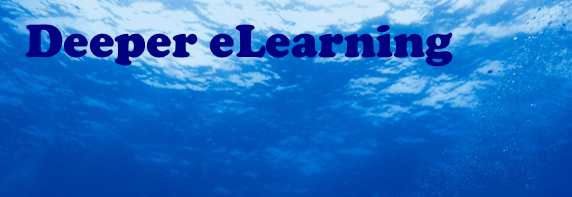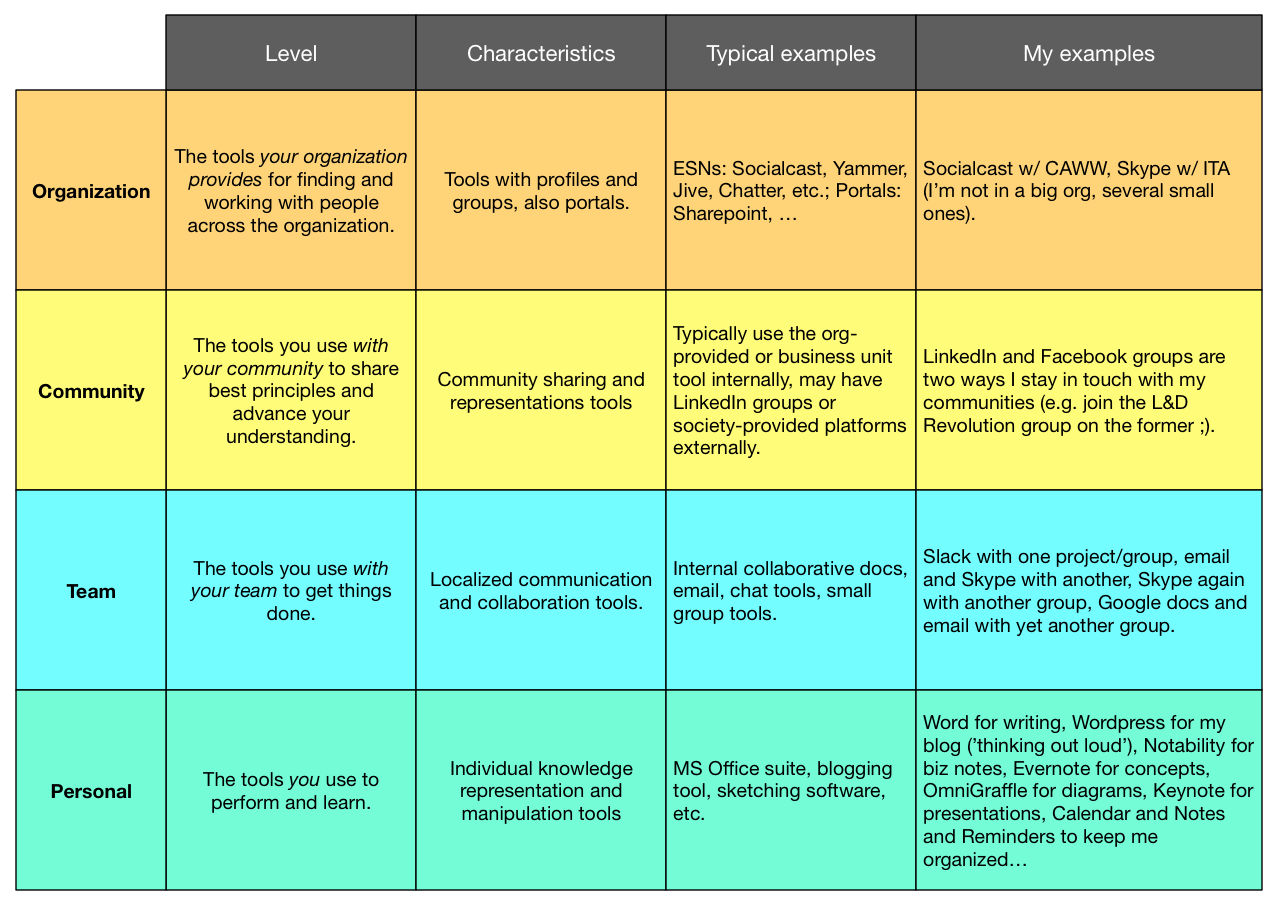At the recent DevLearn conference, I had a chance to present in xAPI Base Camp on Content Systems. This is a topic I’ve been thinking about since working on an adaptive learning system back in 1999-2000. And I think it’s now an even bigger big opportunity. In the course of responding to an interested attendee, I aggregated this list of my (non-blog) publications on the process, and I thought it might be useful to share them here (from most recent to earliest):
Talking about lifecycle and opportunities in the Litmos blog
Perspective from visiting the Intelligent Content conference in eLearnMag
The possibilities and necessities of adapting to context in Learning Solutions magazine
New ways of looking at learning content in Learning Solutions magazine
Moving from text to experience for publishers in eLearnMag
A discussion paper including granularity and tagging in the IFETS journal
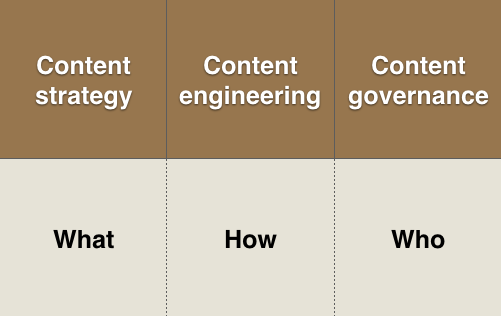 What you see is a transition in focus. From thinking about content objects at the right granularity and with the right tagging, I transition to thinking about strategy for content publishers. Ultimately, I have shifted to looking at the learning industry and opportunities to adapt learning to context (which includes location, current task, current role, and more).
What you see is a transition in focus. From thinking about content objects at the right granularity and with the right tagging, I transition to thinking about strategy for content publishers. Ultimately, I have shifted to looking at the learning industry and opportunities to adapt learning to context (which includes location, current task, current role, and more).
While I think that adaptivity is a ways away, I also believe that the initial efforts in getting more rigorous about content strategy, engineering, and governance are a worthwhile investment now. The benefits are in less redundancy, tighter design, tracking, and greater flexibility. The long term benefits will come from analytics, adaptivity, and contextualization. I reckon that’s an opportunity that’s hard to ignore. I’ll suggest that it’s past time to be thinking about it, and time to start acting. What about you? Are you ready?
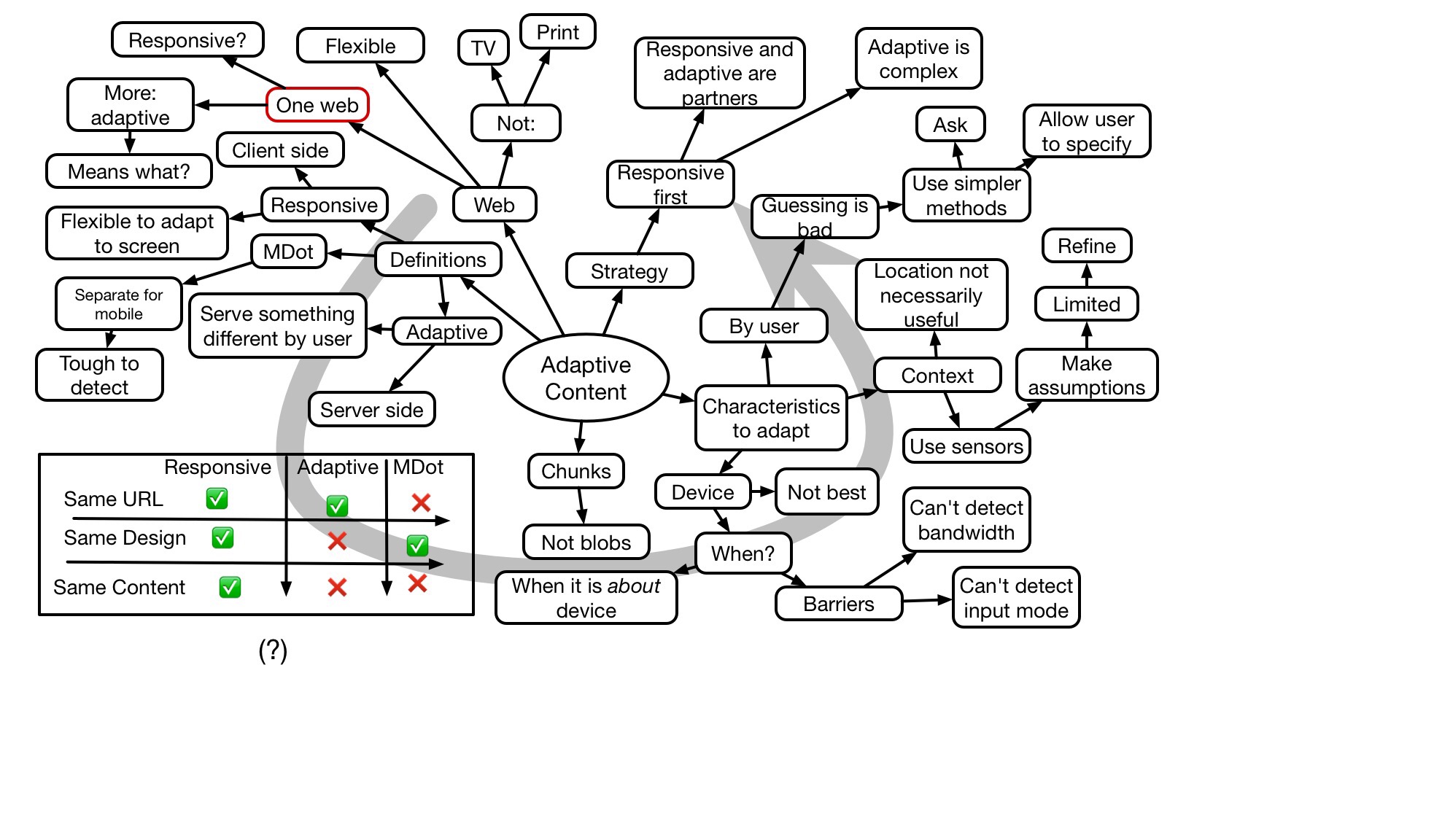
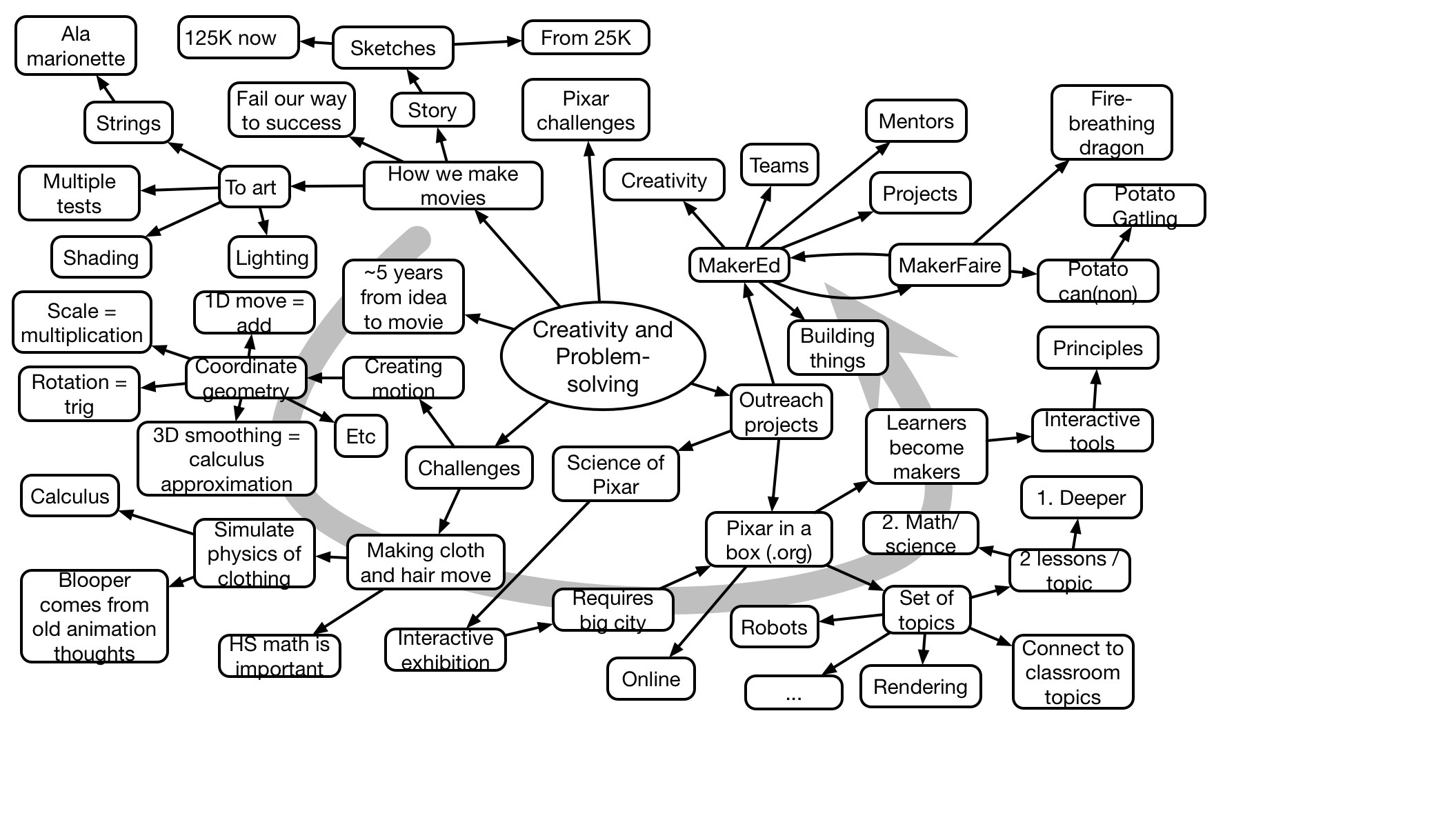
 In the area of infrastructure, I focused largely on two sub categories, content models and semantics. I’ve been big on the ways that content could be used, from early work I did on content models that led to flexible delivery in an adaptive learning system, a context-sensitive performance support system, and a flexible content publishing system. I’ve subsequently written about content in a variety of places, attended an intelligent content conference, and have been generally
In the area of infrastructure, I focused largely on two sub categories, content models and semantics. I’ve been big on the ways that content could be used, from early work I did on content models that led to flexible delivery in an adaptive learning system, a context-sensitive performance support system, and a flexible content publishing system. I’ve subsequently written about content in a variety of places, attended an intelligent content conference, and have been generally 
